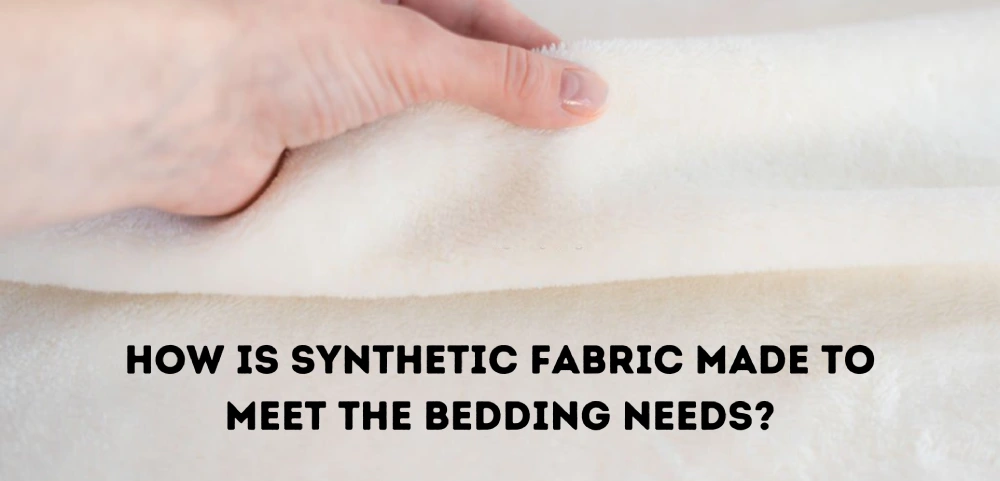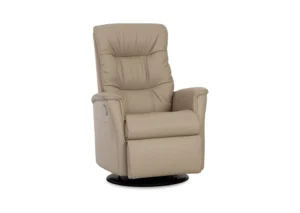How is Synthetic Fabric Made to Meet The Bedding Needs?
By TOI Staff
July 20, 2023
Update on : July 20, 2023

The textile industry has witnessed a revolution in the production of bedding materials with the advent of synthetic fabrics. Synthetic fabrics, such as polyester, nylon, and microfiber, have gained immense popularity due to their durability, affordability, and versatility. This article delves into the process of manufacturing synthetic fabrics for bedding applications, highlighting the various materials used, the production techniques employed, and the benefits they offer in meeting the diverse needs of consumers. If you’re reading this article, congratulations to you because you’re going to know a lot of things about synthetic fabrics today.
Synthetic fibers possess numerous remarkable benefits in comparison to natural fibers, making them highly sought-after in various expanding industries. Within the realm of fashion, synthetic and chemically made fibers like polyester, nylon, and acrylic, as well as semi-synthetic cellulosic fibers such as viscose, rayon, modal, and lyocell are widely utilized. One particularly noteworthy advantage of synthetic fibers is their affordability when compared to alternative textile options. Nevertheless, it is important to note that synthetic fabrics do not rank highly in terms of environmental friendliness.
In the production of synthetic fabrics, the fundamental procedure involves transforming a liquid solution of polymers, which are long chains of molecules, into fibers. These polymers are obtained through chemical reactions utilizing petroleum or natural gas as starting materials. Subsequently, the fibers are woven or knitted together to form fabrics that can undergo various treatments such as dyeing, printing, or finishing. The specific process and types of polymers employed vary depending on the desired fabric. For instance, polyester is created through a reaction between ethylene glycol and terephthalic acid, while nylon is produced by combining hexamethylene diamine and adipic acid. On the other hand, rayon is manufactured from cellulose, a natural polymer found in plants, which is dissolved in a chemical solution and then extruded into fibers. However, below is the information you need to know on how synthetic fabrics are made to meet bedding needs:
Materials Used in Synthetic Fabric Production
Synthetic fabrics are made from petroleum-based products, such as polymers or fibers derived from petrochemicals. Polyester, nylon, and microfiber are among the most commonly used materials in synthetic fabric production. Polyester is a versatile synthetic fiber that is widely used in the bedding industry. It offers several benefits such as excellent wrinkle resistance, durability, and ease of care. Polyester bedding is known for retaining its shape and appearance even after multiple washes, making it a popular choice for sheets, pillowcases, and comforters.
Nylon is another good synthetic fabric which that known for its strength and resilience. It is often used in the production of bed sheets and covers that require enhanced tear resistance. Nylon bedding can withstand frequent use and washing without losing its quality, making it a durable option. When we are talking about synthetic fabrics, microfiber is also a type of synthetic fabric made from ultra-thin fibers. It is valued for its softness, breathability, and moisture-wicking properties. Microfiber bedding is known to be hypoallergenic and can help regulate body temperature by wicking away moisture, making it a suitable choice for those with allergies or who tend to sleep hot.
Manufacturing Process of Synthetic Fabrics
The production of synthetic fabrics involves several steps, including polymerization, spinning, and finishing. In the polymerization stage, the raw materials, such as polyester or nylon chips, are melted and transformed into a liquid state. This liquid is then extruded through spinnerets to form continuous filaments, which are further cooled and solidified. The spinning process determines the properties of the fabric, such as its texture, strength, and appearance. Depending on the desired outcome, different spinning methods are employed, such as melt spinning, dry spinning, or wet spinning. These techniques ensure the filaments are arranged in a controlled manner to achieve the desired fabric characteristics.
After spinning, the filaments are drawn, which involves stretching the fibers to enhance their strength and stability. This step also influences the fabric’s properties, such as its softness, elasticity, and resistance to pilling. The drawn filaments are then subjected to various finishing processes, such as heat setting, dyeing, and printing, to further enhance their appearance, colorfastness, and performance.
Benefits of Synthetic Fabrics in Bedding
Synthetic fabrics offer numerous advantages when used in bedding products. Firstly, their durability ensures a longer lifespan compared to natural fibers. Synthetic bedding materials are highly resistant to wear, tear, and fading, making them an excellent choice for long-lasting bedding options. Secondly, synthetic fabrics are typically more affordable than their natural counterparts, allowing consumers to access high-quality bedding products at reasonable prices. This affordability factor has made synthetic bedding accessible to a wide range of consumers.
Additionally, synthetic fabrics offer superior wrinkle resistance, requiring minimal ironing or upkeep. Bedding made from synthetic materials retains its crisp and smooth appearance even after multiple uses and washes, providing a fresh and neat look to the bedroom. Synthetic fabrics also excel in moisture-wicking capabilities, drawing away perspiration from the body during sleep. This property helps regulate body temperature, keeping sleepers cool and comfortable throughout the night. Furthermore, synthetic fabrics can be engineered to provide specific features, such as hypoallergenic properties or resistance to dust mites. This makes them an ideal choice for individuals with allergies or respiratory sensitivities, promoting a healthier sleep environment.
In conclusion, synthetic fabrics are widely used for bedding because they offer some benefits over natural fabrics, such as lower cost, higher durability, and, more variety. However, they also have some drawbacks, such as lower breathability, higher environmental impact, and, potential health risks. Therefore, it is important to weigh the pros and cons of synthetic fabrics before buying them for bedding. It is also advisable to check the labels for the type of fabric, the thread count, the weave, the finish, and the care instructions before making a purchase.
Read more: How is Synthetic Fabric Made to Meet The Bedding Needs?















